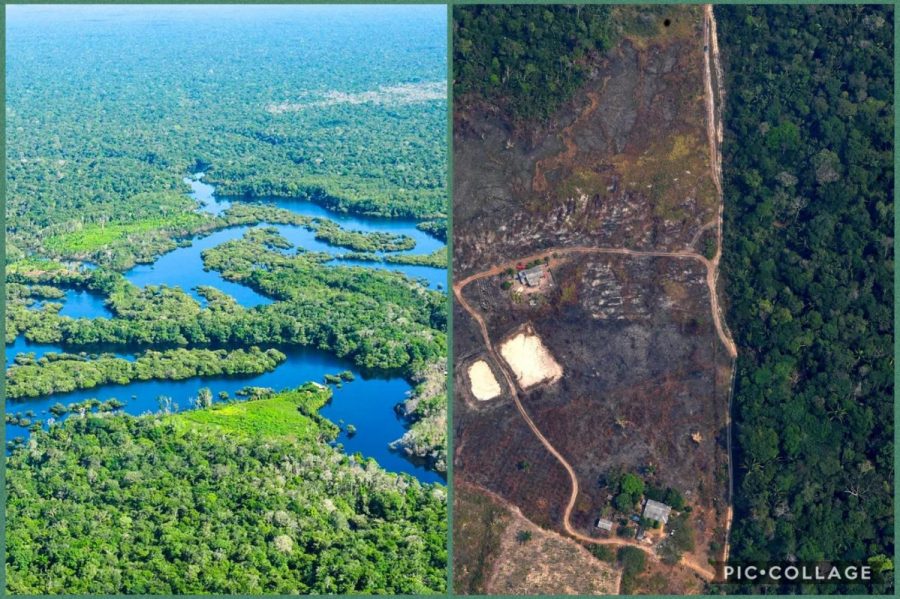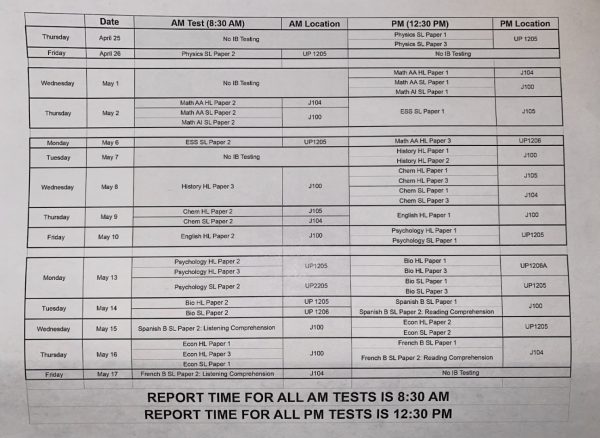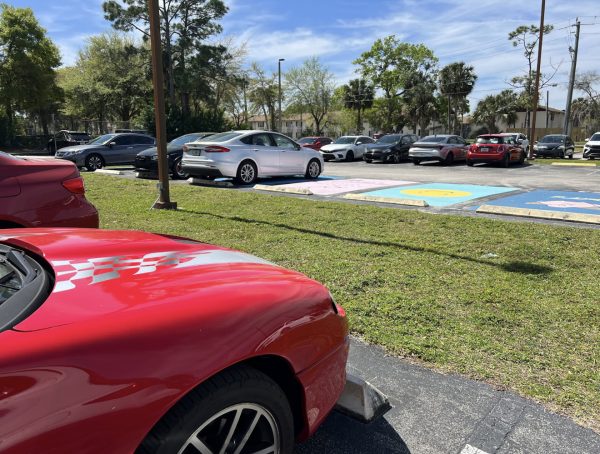Amazon Rainforest: What is Left?
The before and after pictures of the Amazon Rainforest make it evident that humans must quickly decide on a course of action in order to protect the environment from further damage. The world is running out of time and we must hurry before the damages become irreversible.
January 22, 2021
The Amazon rainforest is home to an abundance of essential species, and the worsening state of the forest may drive the endangered species to extinction. Last year, the rainforest had a rising number of fires that destroyed large portions of the environment that species depend on. The fires, caused by global warming, and countries exploiting the rainforest for resources, whether it be wood, oil, or the species that inhabit it, are taking a devastating toll on the Amazon. More than 464 square miles of the rainforest has been destroyed by human-influenced fires from Jan. to April of 2020 alone, which was 55 percent more than the previous year.
IB Senior Jordan Perez thinks “The deforestation of the Amazon rainforest would create a massive rift in the ecosystem because not only would it cause major damage to the wildlife within it, the forest would be lost as a valuable resource for various things. The mass deforestation of the forest is an issue, as the forest is known for its diverse plant life, as well as animal life, which is crucial to the overall ecosystem.
Usually, the Amazon has about five years of rainfall between the dry seasons, but a new report from Geologist Robert Toovey Walker discusses how the rainforest now has a longer dry season that prevents the forest from recovering from the damage. During the dry season, the number of flammable plant species increases, as do the chances of fire due to the reduced rainy seasons. Vegetation is essential to the water cycle through transpiration, and with fewer trees, the water in the Amazon rainforest will decrease immensely. Once the deforestation is around 30-50 percent, rainfall will be permanently affected and decrease by 40 percent.
This has an extreme impact on the species living in the Amazon rainforest since they rely on the trees and surroundings for living spaces, places, and other species for food, and the surrounding environment for protection. The constant warm temperatures between 70 to 90 degrees Fahrenheit also help promote the livelihood of species, but temperature fluctuations due to climate change will provide an unstable environment for them. Not only that, but deforestation due to the fires will bring even more species closer to extinction. Every species in the rainforest affects others, whether the population is under 50 or over a million, and these current and upcoming changes in the rainforest will cause a cascade of dangerous effects on all the species. Even species outside of the rainforest are affected since the Amazon is a destination for migration for many species. An average of 137 species go extinct daily, and this number will only increase as climate change continues to impact our world.
Walker claims “Southern Amazonia can expect to reach a tipping point sometime before 2064 at the current rate of dry-season lengthening,” indicating the fast-approaching dangers that face the rainforest.
There are still decades before 2064, and hopefully, the Amazon rainforest will receive support. Samhita Doranala, a senior in the IB program, has a few ideas on how to help the rainforest: “You can donate to organizations such as Amazon Watch, Rainforest Alliance, and World Wildlife Fund. They focus on reducing human impact on the environment. Another way to help is to purchase products that protect against deforestation. If nothing else, a simple way to help is to sign petitions advocating for the urgent action and protection of the Amazon Rainforest.”
If measures are not taken to protect and conserve the rainforest, environments, and countries all over the world will feel the impact. Still, that does not mean we will not have consequences for the current state of the Amazon, and the stages up until the predicted tipping point.
For further information please reference:
https://www.ran.org/fact_sheet_rainforest_animals/



































